

- Packaging
Closing the Loop with "Bottle to Bottle" Horizontal Recycling: Insights into Resource Value from the Frontlines
Suntory Group utilizes various beverage containers such as cans, glass bottles and plastic (PET) bottles in its businesses, including both non-alcoholic and alcoholic beverages. With the goal to make PET bottles “100% sustainable” by 2030, the Group is working to realize a circular society through various initiatives including “bottle to bottle” horizontal recycling. In this edition, we focus on the horizontal recycling of PET bottles, and Ms. Yumiko Kato from Recycle Plaza JB introduces how you can help by properly sorting PET bottles.
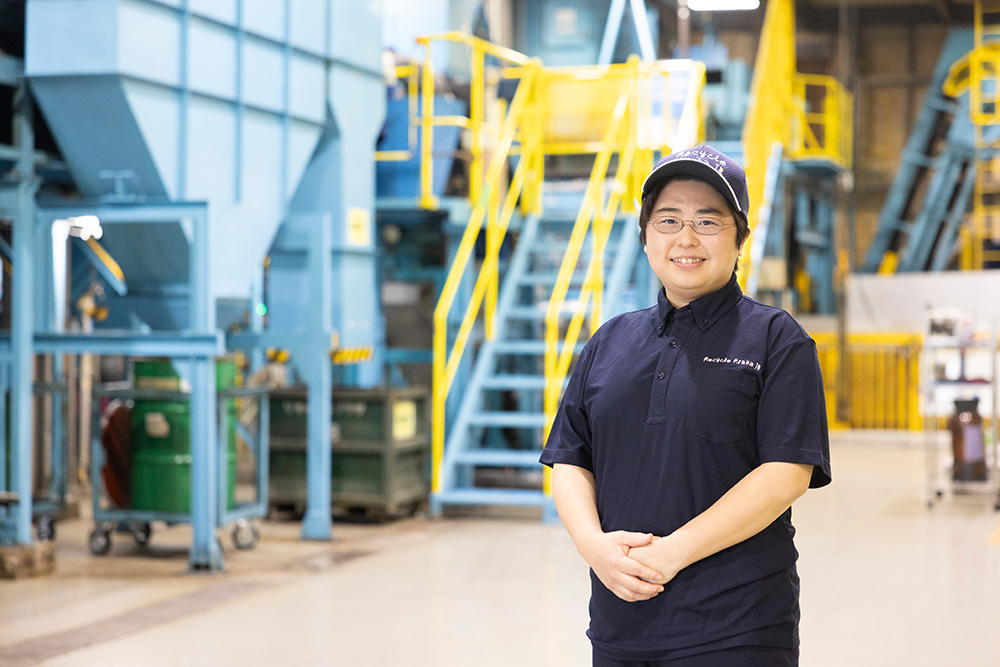
The Recycling Bin is the "Gateway to Recycling"
At Recycle Plaza JB, established by Suntory Group, we recycle empty beverage containers in-house. This factory began operations in May 2003 as the industry's first facility for the intermediate processing of empty beverage containers such as cans, glass bottles, and PET bottles. Recycle Plaza JB is part of Suntory Beverage Solution Ltd., which is responsible for Suntory Group's vending machine business. Its responsibilities include delivering products to customers through vending machines and collect the empty cans, glass bottles, and PET bottles.
The “bin” next to the vending machines is not a trash can; it’s a recycling bin designed to collect empty cans, glass bottles, and PET bottles. Once these empty containers are placed in recycling bins, route sales staff who maintain the vending machines collect and transport them to Recycle Plaza JB, where the recycling process begins. It is as simple as placing your empty containers such as PET bottles into the recycling bin which is the “gateway to recycling.”
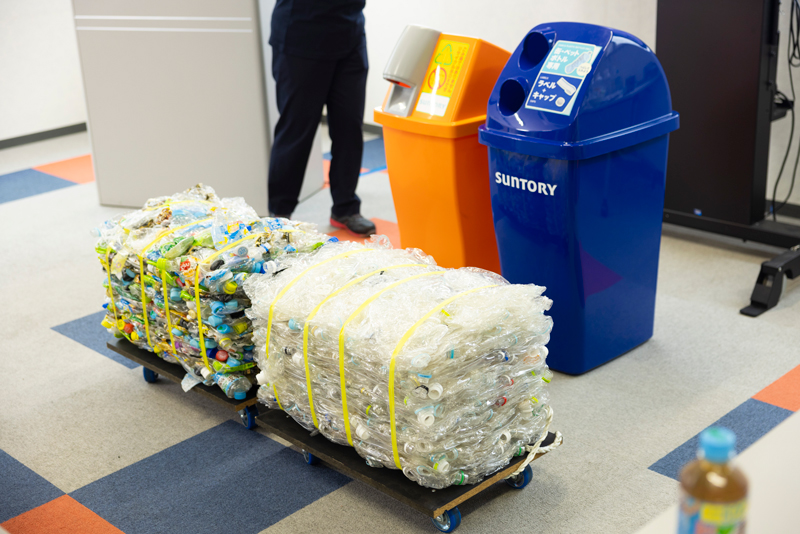
Used PET bottles are sorted to remove foreign objects and then compressed. PET bottles with caps and labels not yet separated (front left) and those with the caps and labels properly separated (front right). The industry-standard orange colored recycling bins have openings facing downwards to make it difficult to put in anything other than empty beverage containers. The top is also sloped to make it difficult to place anything on top of them (back left). As a new initiative, Suntory's recycling bins (back right) have stickers attached to encourage people to separate the PET bottles, caps and labels.
I joined Japan Beverage Ltd. (now Suntory Beverage Solution Ltd.) in 2013 and worked as a route sales rep for the first 11 years. In my capacity of maintaining vending machines and collecting empty beverage containers, I often saw people mistaking recycling bins for trash cans, putting various pieces of trash inside. This experience fueled my desire to inform more people about the role of recycling bins and the horizontal recycling system.
In April 2024, I transferred to Recycle Plaza JB, a job I had long desired. Currently, I’m in charge of leading factory tours and speaking at elementary schools, while also explaining Recycle Plaza JB’s recycling flow, how PET bottles are recycled, and the importance of horizontal recycling. I have been interested in environmental and sanitation-related issues since I was a student, and have had a variety of experiences, including specialized studies and actually observing the activities of Japan Overseas Cooperation Volunteers (JOCV) working overseas. It’s no exaggeration to say that the very existence of Recycle Plaza JB, which actively seeks to raise awareness of environmental issues and horizontal recycling, was what drew me to join the company. I now find my work very rewarding and enjoyable.
A Bridge for Horizontal Recycling
PET bottles are known as the “utility player of recycling” since they are recycled into many uses other than PET bottles such as clothing and trays. However, because collection systems for clothing and trays are not as well established as for PET bottles, these items are often incinerated after one use, breaking the recycling loop. For this reason, Suntory Group promotes “bottle to bottle” horizontal recycling, where used PET bottles are turned into new ones over and over again.
Suntory’s “Bottle to Bottle” Horizontal Recycling
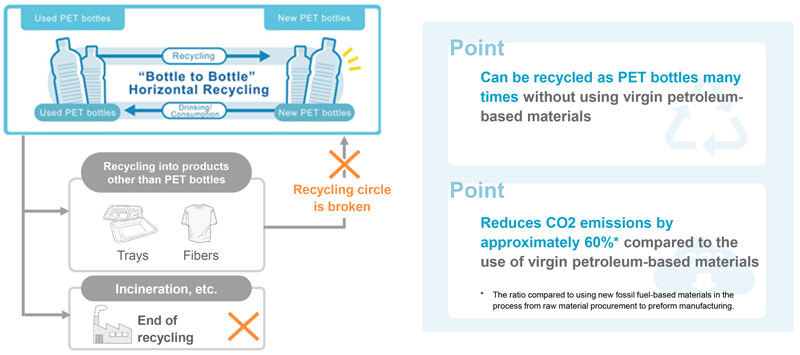
Horizontal recycling is a form of recycling where used containers are reused as raw materials to create the same type of container. In 2011, Suntory Group, in collaboration with Kyoei Sangyo Co., Ltd., became the first in Japan’s beverage industry to establish “bottle to bottle” horizontal recycling technology using mechanical recycling to create new PET bottles from used ones. This system was put into practical use the following year in 2012.
After you separate used PET bottles, they are collected, sorted, crushed, washed, cleaned, and recycled into PET resin for use in new PET bottles. This resin is melted at high temperature to produce a preform that serves as the prototype for the PET bottle, which is then inflated to create a new one. This horizontal recycling technology has a lower environmental impact and can reduce CO2 emissions by around 60%* compared to using virgin petroleum-based materials.
Suntory Group aims to eliminate the use of virgin petroleum-based materials in PET bottles by switching to 100% recycled or bio-based materials for all PET bottles used by the Group by 2030.
- *Percentage in the process from material procurement to preform manufacturing
Recycle Plaza JB removes and sorts foreign objects and leftover drinks that hinder the horizontal recycling of PET bottles before sending them on to the next process. We truly feel that our role is to bridge society and horizontal recycling.
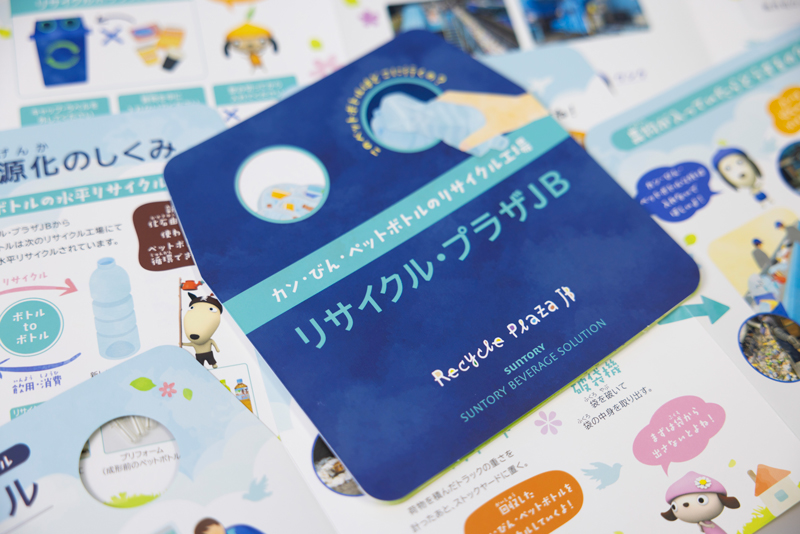
A pamphlet distributed at Recycle Plaza JB. It describes the recycling flow for cans, glass bottles, and PET bottles, as well as the mechanism for recycling PET bottles.
Visualizing the Importance of Sorting
During factory tours and presentations at schools, I emphasize that “sorting equals recycling and mixing equals garbage.” This refers to the challenges associated with the horizontal recycling process, such as containers that contain foreign objects or leftover drinks. During tours and in the classroom, I show the various foreign objects found in bags collected from recycling bins, and I often hear participants of all ages express their surprise at the items. Foreign objects found regularly at Recycle Plaza JB include everyday items such as paper, plastic cups, and disposable masks. Additionally, PET bottles filled with used medical needles, as well as other potentially dangerous foreign objects such as knives, frying pans, and mobile phone batteries have also been found. Not only do these hinder horizontal recycling, but because their removal is performed manually, these foreign objects can threaten the safety of our employees. In particular, mobile phone batteries can explode, and kitchen knives can injure workers, so both are extremely dangerous.
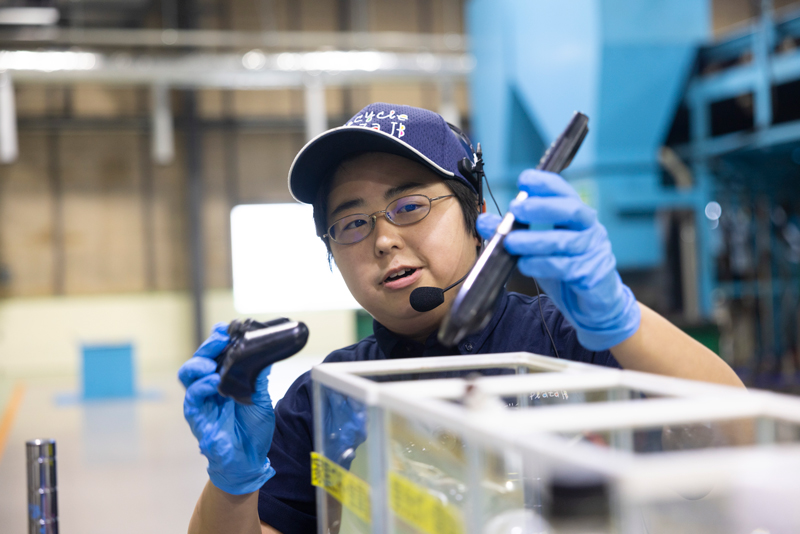
Ms. Kato showing foreign objects found at Recycle Plaza JB. In addition to PET bottles containing cigarette butts, other items found include game console controllers, TV remote controls, and batteries.
When I first saw these foreign objects put in PET bottles, I was shocked and truly surprised by each one. For example, PET bottles that had been used as ashtrays have been found. These cannot be recycled and must be incinerated, meaning they were removed from the resource circulation loop. I hope more people learn about the horizontal recycling system and spread the awareness that PET bottles are a valuable resource.
Two Requests when Using Recycling Bins
During factory tours and presentations at schools, in addition to telling participants not to put foreign objects in recycling bins, I also convey “two requests for cooperation” regarding PET bottles. It is our hope that people cooperate in these two areas to contribute to the realization of a recycling-oriented and zero carbon society.
First, we ask that you make sure that PET bottles are completely empty. Not finishing your drink is not only a waste; it’s also a major hindrance to horizontal recycling. Liquid remaining in a PET bottle may not necessarily be the beverage itself, so the bottle may have to be removed from the horizontal recycling loop, and the additional sorting process results in spending energy that would not have been necessary otherwise. With just a little effort, we can help minimize the energy needed and reduce CO2 emissions.
The second request is to remove the cap and label and lightly crush the bottle before placing it in the recycling bin. All PET bottles are made from plastic, but the bottle itself, cap, and label are all made from different plastic materials. By separating these items in advance, the process of separating only the PET bottle as the raw material for “bottle to bottle” horizontal recycling can be shortened. This also reduces the amount of energy required and also reduces CO2 emissions. Lightly crushing the PET bottle makes room for more PET bottles to fit into the recycling bin, increasing the amount that can be collected at one time. This also helps lower CO2 emissions from transportation. However, when you recycle PET bottles at school, work, or home, please follow the sorting rules of your regional or municipal government.
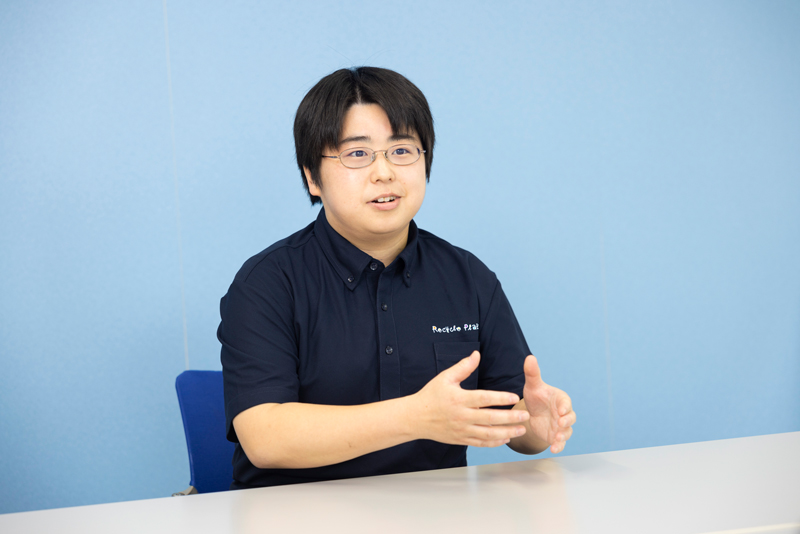
“This may be extreme, but you wouldn't put garbage or foreign objects in a mailbox, would you? I want people to feel the same way about recycling bins,” says Ms. Kato, with regard to foreign objects found in recycling bins.
Children who participate in factory tours and presentations at schools have said, “I want to start doing this today for the sake of the environment,” and “I want to tell my family about it.” Hearing this feedback, I’m reminded every day that because PET bottles are something familiar to everyone, promoting horizontal recycling and “proper sorting” are actions that can be done not only by adults but also children. Small acts, such as finishing drinks as much as possible and removing labels and caps, will lead to more efficient use of resources. I hope to continue conveying the significance and mechanism of horizontal recycling to as many people as possible to create opportunities for people to recognize that PET bottles are a resource, not waste, and encourage everyone to participate in proper sorting practices.
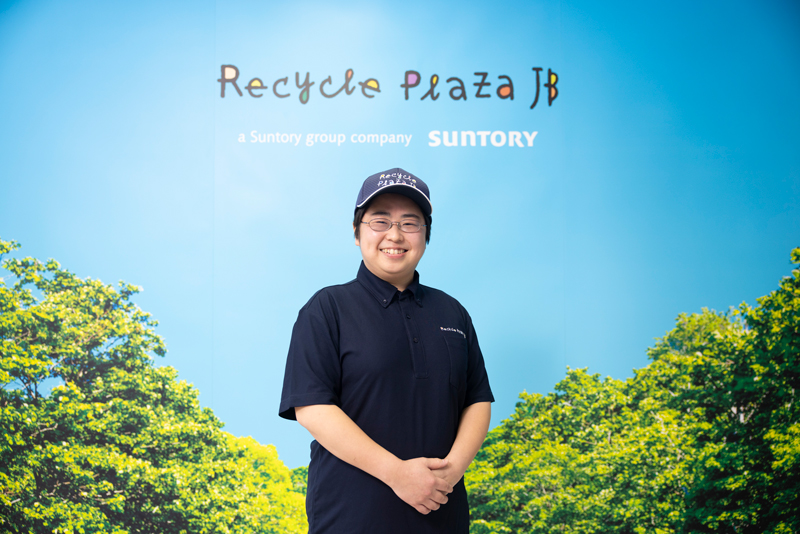
Latest Stories
-
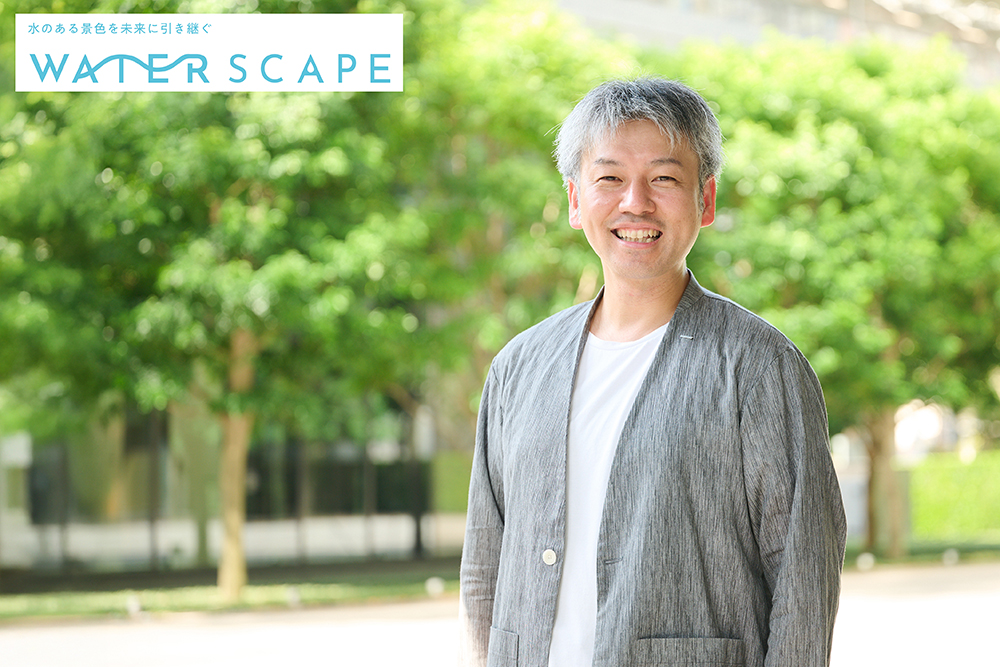
- Water
August 22, 2025
Empowering Society with Suntory's Knowledge and Expertise in “Water”: Passing on Water Landscapes to Future Generations
-

- Packaging
June 17, 2025
Closing the Loop with "Bottle to Bottle" Horizontal Recycling: Insights into Resource Value from the Frontlines
-
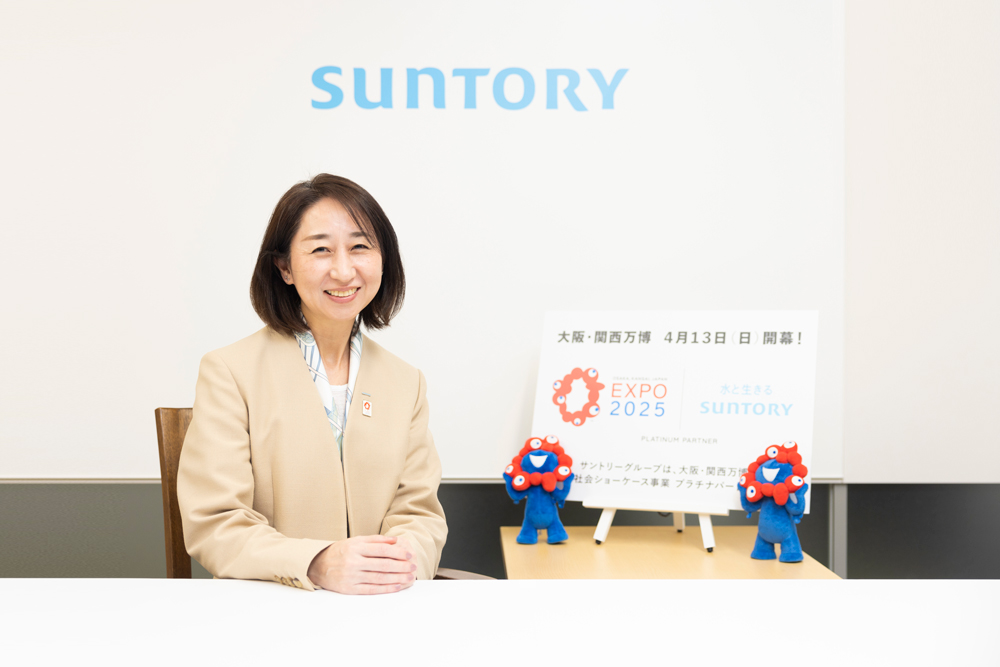
- Enriching Life
- Water
- Raw Ingredients
- Packaging
April 17, 2025
Suntory’s Commitment to “Designing Future Society for Our Lives”: Encouraging New Realizations through Exciting New Experiences at Expo 2025
-

March 31, 2025
The Suntory Sign Brings Smiles and a Sense of Unity
-

- Climate Change
- Raw Ingredients
Februaly 28, 2025
Shaping the Future of Japanese Wine: Secondary Induced Shoot Cultivation Delivers Delicious Grapes in an Era of Climate Change
-

- Water
- Climate Change
Janualy 31, 2025
Bequeathing Water to Future Generations and Conveying Its Importance through Mizuiku, Suntory’s Education Program for Nature and Water
-

- Climate Change
- Raw Ingredients
December 25, 2024
Saving the Planet with Agriculture:Collaborating with Farmers to Pioneer Regenerative Agriculture
-

- Climate Change
- Raw Ingredients
October 11, 2024
The Key for Domestically Producing Sustainable Botanical Raw Materials: Glocal Branding
-

- Water
- Climate Change
- Raw Ingredients
June 7, 2024
The Peatland Water Sanctuary™ Initiative: For Peat, an Important Ingredient in Whisky, and for the Future of the Planet
-
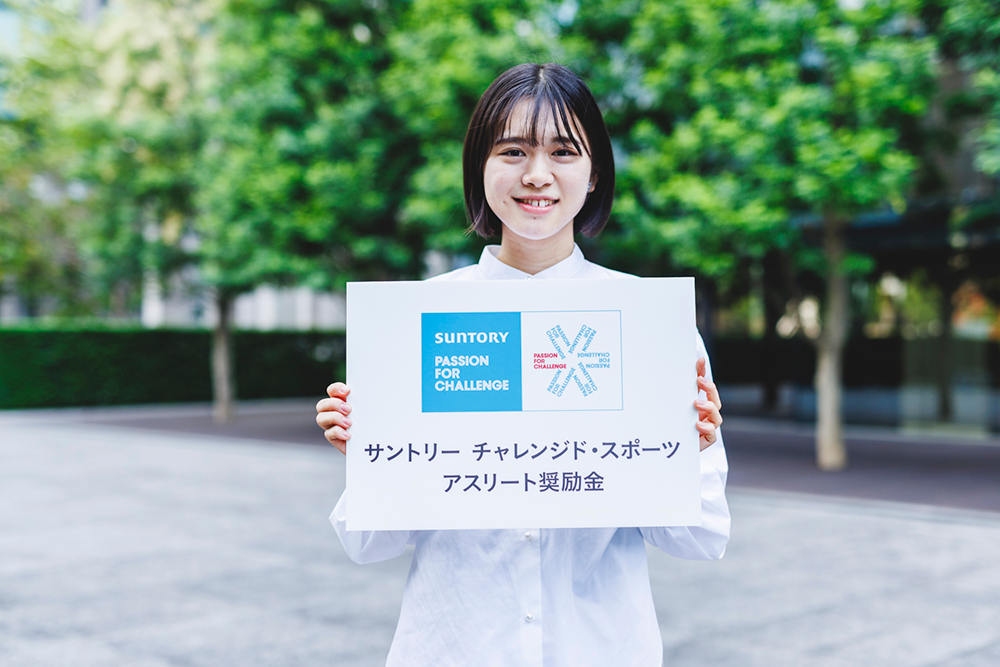
- Enriching Life
April 30, 2024
Enhancing the Foundation of Parasports with the Suntory Challenged Sports Project
-

- Human Rights
- Packaging
- Climate Change
April 30, 2024
In 2024 We Are Launching an Overseas Training Program for All Second-Year New-Graduate Hires!
-

- Raw Ingredients
- CO2
- Biodiversity
November 30, 2023
Protecting UK Blackcurrants and Their Growers: Sustainable Agriculture Support Program
-
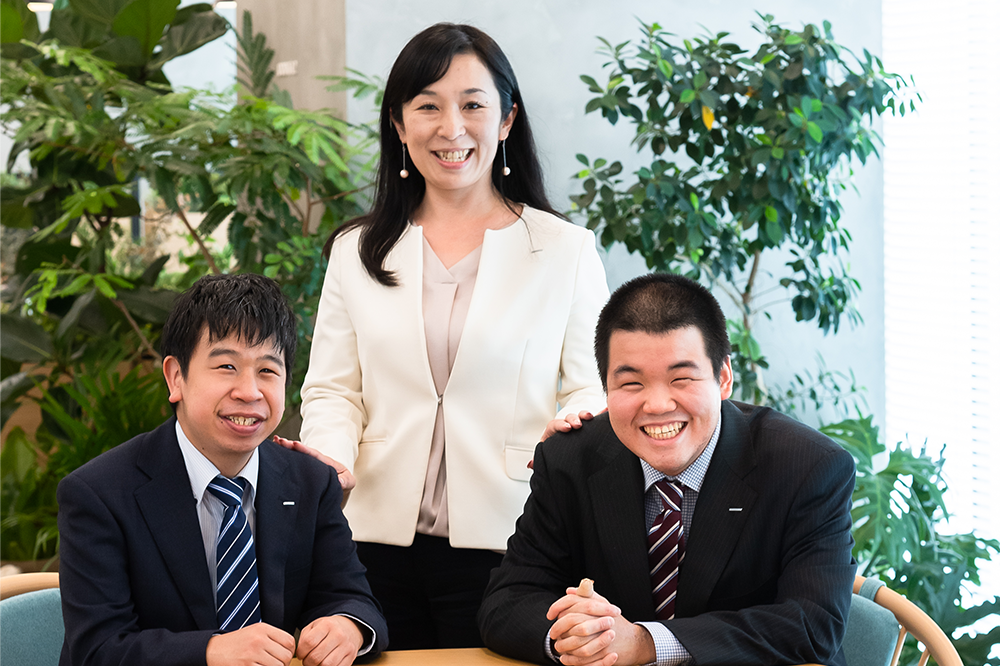
- Human Rights
September 29, 2023
Being the Best Company for Employees with Disabilities to Shine
-
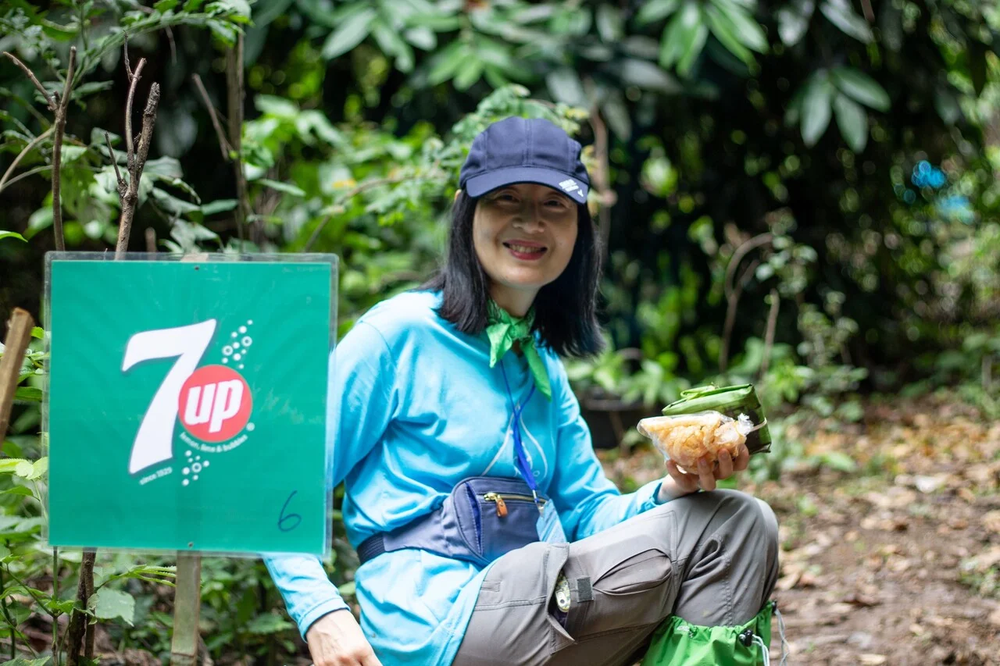
- Water
July 31, 2023
Suntory Mizuiku – Education Program for Nature and Water Expands Globally: Stories from Asia
-

- Health
June 29, 2023
New DRINK SMART Ambassador Program: Internal Certification to Deliver the DRINK SMART Message to More Customers
-
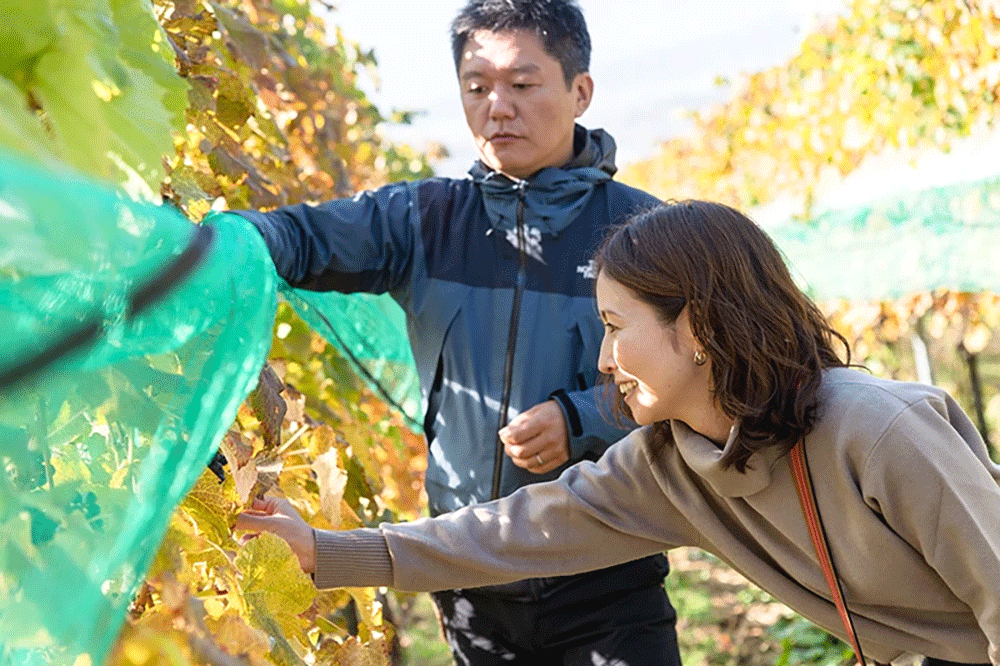
- Raw Ingredients
- CO2
June 29, 2023
Circular Agriculture Initiatives at Tominooka Winery in Japan (Part 2)
-

- Biodiversity
May 10, 2023
Suntory Bird Conservation Activities Are Turning 50: A Look at the Past and the Future (Part 2)
-

- Raw Ingredients
- CO2
April 27, 2023
Circular Agriculture Initiatives at Tominooka Winery in Japan (Part 1)
-

- Health
April 27, 2023
Creating “Friends for Moderate Consumption,” a Campaign Character to Promote Responsible Drinking
-

- Packaging
April 27, 2023
B to B Recycling: Creating New PET Bottles from Used Bottles
-

- Human Rights
April 27, 2023
SUN-co-NEsT, An Online Community Aiming to Balance Work and Parenting
-

- Biodiversity
April 27, 2023
Suntory Bird Conservation Activities Are Turning 50: A Look at the Past and the Future (Part 1)
-

- Water
- Biodiversity
April 27, 2023
Protecting the Forests That Nurture Abundant Water: Suntory Natural Water Sanctuary Initiative
